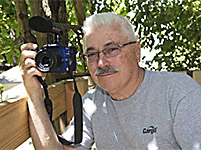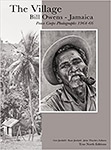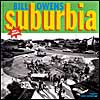The Volunteer who photographed the Summer of Love & then went on to slake a great thirst — Bill Owens (Jamaica)
A Profile in Citizenship
by Jeremiah Norris (Colombia 1963–65)
•
(This Profile of Bill Owens, Jamaica 1964-65, was largely drawn from in interview conducted by Tony D’Souza, Ivory Coast 2000-02 and Madagascar 2002-2003.)

Bill Owens
Early on in his career, Bill took iconic photos of the Hells Angels beating concertgoers with pool cue sticks at the Rolling Stones’ performance during the Altamont Speedway Festival in California four months after Woodstock on December 8, 1969. Altamont is considered by historians as the end of the Summer of Love and the overall 1960s youth ethos. Bill was so fearful of retribution by the Hells Angels that he published the photos from the festival under a pseudonym fearing they would “come and murder’ him. Some of the negatives were later stolen, he believed by the Hells Angels.
In 1964, Bill joined the Peace Corps and was assigned to teach high school in the Jamaican mountains up above Montego. After one year, he moved to another village near Spanish Town. He taught English, general studies, soccer, some community development, and helped people scrounge up lumber to build houses. It was through his Peace Corps experience that he became interested in photography when a Peace Corps/Washington staff member came to his village to take pictures of Volunteers. When Bill witnessed that, he stated “oh my God, I want to be a photographer.”
So, he purchased a camera and started taking pictures.
 A few years after Peace Corps, Bill returned to Jamaica and spent some six or seven months documenting a little village. His photographs show people working, going about their various daily activities, and attending baptisms, weddings and funerals. He tried to document their culture and lifestyle though the unforgiving lens of photography. Subsequently, they were published in a book entitled The Village: Bill Owens — Jamaica Peace Corps Photographs 1964–66, published in 2014 by True North Editions.
A few years after Peace Corps, Bill returned to Jamaica and spent some six or seven months documenting a little village. His photographs show people working, going about their various daily activities, and attending baptisms, weddings and funerals. He tried to document their culture and lifestyle though the unforgiving lens of photography. Subsequently, they were published in a book entitled The Village: Bill Owens — Jamaica Peace Corps Photographs 1964–66, published in 2014 by True North Editions.
 Bill worked as a staff photographer for the Livermore Independent newspaper over a 14-year period before being laid off due to a downsizeing. I
Bill worked as a staff photographer for the Livermore Independent newspaper over a 14-year period before being laid off due to a downsizeing. I
n 1973, he released the book Suburbia whose pictures showed American suburban life in Livermore, California. In a review, The Los Angeles Times commented that the book “rouses pity, contempt, laughter, and self-recognition”.
During the 197os, Bill’s influence was immense, especially in respect to the kind of portraiture that shows the Middle Class in suburban America. In 2001, Suburbia was included in Andrew Roth’s The Book of 101 Books: Seminal Photographic Books of the Twentieth Century. Bill has published other photography books, and his photographs have been exhibited internationally, and are in the collections of the Museum of Modern Art; Berkeley Art Museum; Los Angeles County Museum of Art; San Francisco Museum of Art; Los Angeles Museum of Contemporary Art; San Jose Museum of Art; and the Getty Museum in Los Angeles.
Bill went on from his photographic career to become a well-known beer brewer and publisher of American Brewer magazine. He founded Buffalo Bill’s Brewery in Hayward in 1983, one of the first brewpubs to open in California since prohibition. In 2003, he founded the American Distilling Institute, a professional membership organization and publishing house. “to promote and defend the art and enterprise of craft distilling.” As the president of ADI, Bill has become one of the leading spokesmen of the craft brewing movement.
When asked what Bill thought of his Peace Corps service, he responded: “I spoke about that recently with my wife. I don’t know if I helped out other people, but it sure was a life-changing thing for me. I went in to help people and I think that was good to give back.” When asked about his ultimate legacy as a photographer, he commented: “I’m a documentary photographer and I wanted to show us as we are, as real people, and that we are a good society”.
Given Bill’s significant contributions to the deployment of documentary photography as a means to illustrate the common life-styles of villagers, and his subsequent development of a craft brew to slake their great thirst, he most certainly deserves a Profile in Citizenship.
No comments yet.
Add your comment